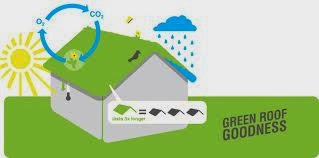1. Keep Excess Water Off
One of your roof's primary jobs is to keep water out of your
house, but your roof needs your help to get rid of the water that falls on it.
Make sure to keep your roof's gutters and downspouts in tip-top shape so that
it can drain properly, and trim your trees so that they do not hang over the
roof, dripping water and shedding leaves into the gutters.
2. Conquer Moss
Keeping your trees trimmed away from the roof will make the
roof less friendly to moss by minimizing moss-welcoming shady areas, but moss
may still grow. Use Wet & Forget to safely and gently remove any moss on
your roof, and re-treat at the first sign of new growth to prevent moss from
coming back.
3. Check Your Insulation
Good attic insulation helps keep your house warm in the
winter and cool in the summer, and it also helps protect your roof. A good
layer of insulation on the attic floor with no gap for air to get between the
house and the insulation is a must. This prevents big temperature exchanges
between the house and attic, which will cause damaging water condensation on
the underside of the roof
4. Do a Yearly inspection
Check your roof at least once a year, preferably in the
spring, for any signs of damaged or lifted shingles, moss growth, or other
problems. If you don't feel comfortable checking the roof yourself, you can
hire a roofing professional to do the inspection.
5. Maintain Good Ventilation
Like insulation, good attic ventilation will also protect
your roof from damage caused by water condensation. Without good ventilation,
water vapor can cause the roof sheathing and rafters to rot and can even damage
the shingles. Make sure your attic has good, unobstructed vents with screens to
keep birds out. Ventilation fans are available for larger attics.






